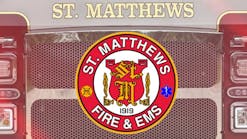What do you think that a company would pay to have the brand and market presence that’s represented by the fire service? As iconic as the “swoosh” is to Nike or the “apple” is to Apple, so, too, is the Maltese cross to the fire service. In many regards, the fire service is America’s most trusted brand.
As firefighters, we are the marketers, protectors and ambassadors of that brand. From firefighter to fire chief, this is our corporation. We are given the privilege to serve the community standing in front of our fire service brand.
Brand management
The practices of the business world often have implications for the fire service. Brand management is a perfect example. Brand management begins with an analysis of how a brand is perceived in the market (our communities), proceeds to planning how the brand should be perceived if it is to achieve its objectives, and continues via ensuring that the brand is comprehended as planned and secures its objectives.
Developing a relationship with the community is essential for fire service brand management. Tangible elements of brand management include the product itself, its look, its price, its packaging, etc. The intangible elements are the experiences that the constituents share with the brand as well as the relationships that they have with the brand.
For the opportunity to strengthen the fire service brand, you first must understand how you are perceived by your community. Is your organization recognizable within your community? What are your relationships with surrounding agencies? How do you engage and manage your brand within the community?
To answer these questions—and more—you must figure out where you stand and the steps that are necessary to move forward.
Your desired end state should be a positive brand awareness that’s brought about by promoting positive attention within your community. Brand elements that resonate with your community will produce favorable attention and have an enduring desired effect.
For many of us, our first attraction to the fire service came from recognizing that the profession has a very unique and special brand. When the public is asked about the fire service, many use “hero,” “civil servants,” “brave,” “helpers” (as Mr. Rogers would say) or other uplifting monikers. However, there are those who are vocal detractors of the brand/profession, and, in many cases, those ranks are growing. Their perceptions include getting paid to sleep and shop for groceries while on the job and to working out while on duty. The sacred pension conversations have the ire of many of these critics.
How do we as a profession responsibly address this? We begin by recognizing our place in managing the fire service identity and developing community equity.
Managing the organizational brand
The fire service as a brand is well-established in the psyche of communities. You preserve and develop brand equity by innovation, creativity and demonstrated value. In most communities, the fire service brand is codified by its mission, vision and values. These define not only why you serve the community, but how you will do it. However, public perception often drives reality. If you aren’t engaged and present in the community, the opinion of the constituents won’t align with the organization’s mission, vision and values. The mechanisms for unlocking this potential now are—more than ever—at your fingertips. In the era of social media, you are presented with incredible marketing and brand-management opportunities. Apps, such as Facebook, Twitter, Instagram and Next Door, offer immediate access and information to your organization. Opportunities don’t end there.
The 21st century fire service will be characterized by demonstrating value. Community risk reduction (CRR) is the embodiment of the fire service ethos. Moreover, it can be leveraged as a brand-management tool. It is easy to let the great work that’s being done to reduce community risk go unnoticed; the responsibility is on leadership to ensure that the brand equity of shared community value is recognized and understood. Never miss the opportunity to highlight— whether through social media, media outlets or community groups—the positive effect that the fire service has in the community. Where and on what the fire department focuses will gain attention from the community.
If the only time that the community engages with your organization is through pictures of firefighters on the picket line, endorsing political candidates or lobbying for wage increases, you’re missing the mark. Building community equity and managing the fire service brand requires much more. You must assume the mantle of the sacred community trust, that when a call to service is made from the community, we, the professionals, respond.
We also must share brand equity with the community. Successes in the fire service are successes of the community more than they are of the individual organization. For example, new stations or remodels, purchasing new apparatus, receiving an upgrade in ISO standing and achieving an Accreditation status from the Center for Public Safety Excellence all demonstrate community value. Never miss the chance to share this market equity with the community: They earned it.
As brand managers and developers of community equity, you must ensure user-friendly and inclusive opportunities for the community that you serve to interact with its firefighters. Open houses, career days and community events should be seen as an opportunity to demonstrate the value that the community receives for the brand that it supports.
The company level
Many brand-management efforts are tangible. To begin, ask yourself, “What do our people look like?” Is there pride in their uniforms, equipment, apparatus and station? Look at your apparatus. How does the hosebed look? A plate of spaghetti, or is it organized and tight? Does the vehicle shine, or is it dirty, waiting for the next shift to clean it? How about the cab? Would you let your family crawl around on it, or is it a filthy mess?
How you answer these questions determines how resolute you and your crew are with managing the brand.
Engineers and FAEs, while responding to emergencies, are you “spanking” citizens with your siren and air horn?
What is important to your fire officers? After clearing a call, are you welcoming children to look at the truck, or are you too busy not recognizing the investment of how five minutes today will build community equity and brand management that can pay a lifetime of dividends?
At every opportunity, invest in community relationships. Never forget that you have been given the privilege to serve.
Every so often, we stumble upon a story of a crew who helped with a civilian’s chores or took care of a family’s pet after a fire or medical emergency. These stories dominate social media and get massive positive attention. This demonstrates the value of positive brand management. Never miss the opportunity to serve.
The individual
Managing the individual brand is the most critical aspect of organizational brand management. Recognize that you are a part of the whole, and individual actions collectively account for the whole. In many instances, the mantra to be or act professionally is sounded. What does that mean? Take a look in the mirror. How does your uniform look? Is it well taken care of, boots polished, shirt tucked in? This is what the community sees. Take pride in the uniform. It represents your community first and you second.
Next: The issue of the on-duty/off-duty dilemma, which is an argument that will continue long after those of you who are reading this article leave the profession. However, the question remains: Should off-duty behavior be looked at? My answer: A resounding yes.
Each of you is recognized by your family and community as a firefighter. That honor and burden can be heavy, but it’s worth upholding. This comes down to the “headline test.” I can assure you—and you can find many examples of this—that when a firefighter screws up off-duty, the behavior in question is attributed to the fire service. Compare these two headlines: “Fight Breaks Out at Local Bar, Two People Arrested” and “Local Firefighter Arrested in Bar-Room Brawl.” One is an indictment of an entire profession. It damages the fire service brand.
You might agree or disagree with the effect of off-duty behavior as it relates to your job and your standing within your organization. However, the profession will argue otherwise. Lying, stealing, fraud and other unethical behaviors are damaging to the brand that burden every firefighter.
Managing the fire service brand shouldn’t be a chore. It should be a source of pride and enthusiasm. The symbol on the back of your department T-shirt represents more than the name on the front. Earn it every day, respect it, and leave the profession better than you found it. Our fire service brand deserves it.

Kristopher Blume
Kristopher T. Blume is the fire chief of the Meridian, ID, Fire Department and has more than two decades of fire service experience. He is an author, lecturer and independent consultant. Blume is a graduate of the Executive Fire Officer (EFO) program and is an instructor at the National Fire Academy. As a student of the fire service, he is focused on values-driven, mission-focused leadership for the profession.








